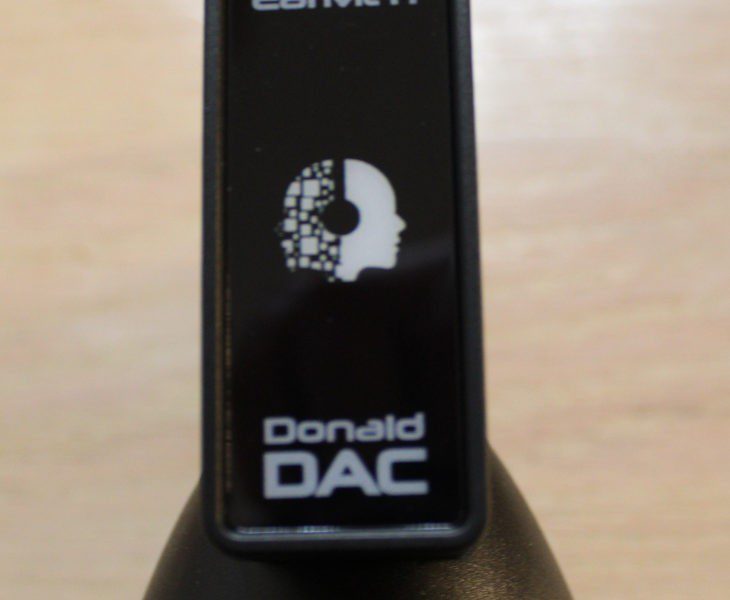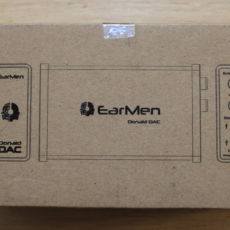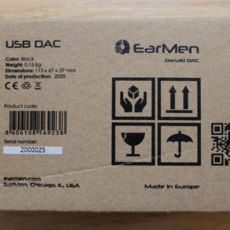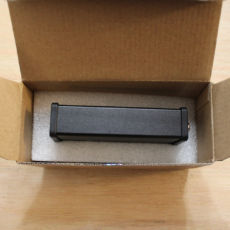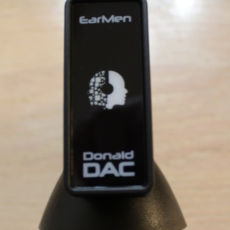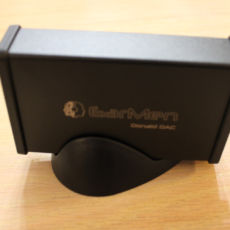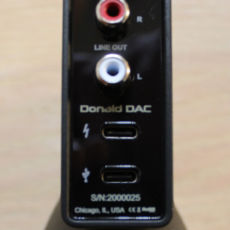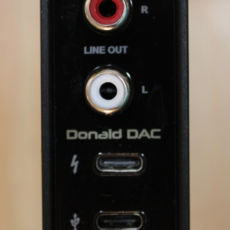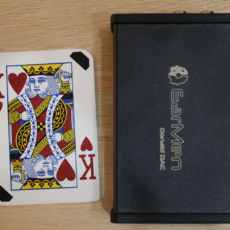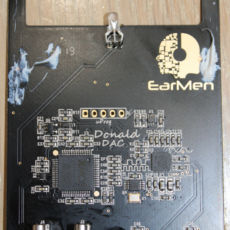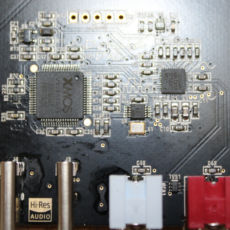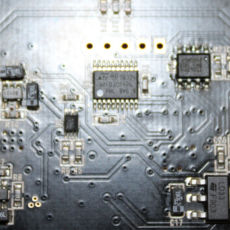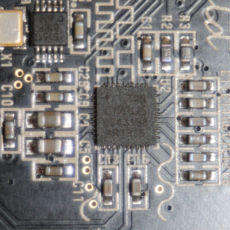Earmen Donald Dac
Disclaimer: Earmen is the portable device wing of Auris, the famous tube amplifier maker out of Serbia. I own and enjoy the Auris Euterpe and have had the privilege of trying several other Auris amplifiers and can say all have been outstanding. For that reason when I was approached about reviewing the new line of Earmen products I couldn’t say yes fast enough. I will admit to high expectations coming into this due to my previous experience with their parent brand. I was provided the unit for review, but have received no compensation otherwise and have no financial interest in either Earmen or Auris. I was given no instruction on things to include or edit for this review. For more information on the Donald Dac, See the Auris/Earmen website.
Packaging:
The Donald DAC comes packaged in a plain brown box with a line drawing of the front,rear, and side of the device on the front of the carton and UPC, and serial number info on the reverse. It does not list specs on either side and the packaging is obviously not intended to sell the device but only to transport it. Once you open the box you are greated by the donald dac encased in foam surround. Thats it, nothing else is lurking below it. It might be nice to include at least a single usb cable and a pair of RCAs in the box so you don’t have to go hunt those down before you can use the device, but that would increase size and shipping costs as well as materials costs. Most of us have more than a few cables already so probably not that big an event. At the price, it is certainly an understandable omission.
Build:
The Donald DAC is a simple little box, with an LED display on the front and dual USB type C ports and RCA jacks at the rear. the casing is all metal with end-pieces that screw onto the case body. Screws are hidden under the cosmetic faceplates that are simply glued in place. The unit is very light and even with the angled base attached, it is prone to move or fall over if the cable is pulled or the unit bumped. This is not to say the unit isn’t solidly constructed, just that as small and lightweight as the housing is, it is probably best placed in a location where it isn’t going to be jostled. The provided base is plastic and could use a bit of extra heft. My thought was to make a baseplate and then fill the base with sand and glue the plate in place to give the base a bit more heft and make it easier to keep steady.
Size Reference:
The photos so far have given little reference to size so I decided to find a reference most would be familiar with. The playing card in the pictures below is from a standard sized Las Vegas Casino deck of cards. As you can see length is just slightly longer than the card at roughly 4.5 inches long. Height is nearly identical to the card at 3 inches, and width is slightly over an inch. The unit is very compact indeed and is easily portable should one decide to do so. The TR-amp I am also reviewing is only slightly larger and incorporates several features that make it more suitable for on-the-go use, but none the less, it is easy to pocket the Donald DAC.
Internals:
Inside the Donald is the Cirrus logic 43198 chip handling the decoding duties, along with an Xmos 200 series USB controller handling the digitial input. This combination supports up to 32/384kHz PCM, DSD256, and full MQA decoding. The Dual USB type C ports allow the user to power the DAC via the source or via an external power source for improved noise reduction and the display on the front of the unit shows the user which mode is in use at a glance as when an external power source is attached the display turns red, without one it’s blue. Do watch as reversing the two cables will power the dac, but obviously wont send data to the system. The two ports are not interchangeable.
Supported Formats:
PCM support is up to 32bit/384kHz while DSD is supported natively up to 128 and software decoded up DSD256. DXD (24/352.8kHz) is supported as well. The TR is also an officially licensed MQA product meaning it supports a full native MQA hardware renderer. This is becoming more common, but is still not seen as often as PCM and DSD support. The Addition of MQA means the TR supports Tidal Masters at full resolution. I’ve heard arguments both for and against MQA with proponents claiming greatly improved sound and opponents claiming it is more about file size for streaming services than audio quality for the end user. I think the answer lies somewhere between the two extremes as MQA does provide a way to package high quality audio into smaller files than FLAC and may ultimately lend itself to better quality depending on the encoding process. If you have an interest in MQA, you can learn more about it here.
Sound:
Well with the Donald DAC being a one trick pony, its value hinges entirely on that one trick. So how well does it handle the digital to analog conversion? In short very well. The choice of the Cirrus logic 43198 was a good one as it splits the difference in the ESS chips that can sound somewhat cool and analytical, and the AK chips which can at times sacrifice detail and clarity for smooth transitions. The 43198 implementation in the Donald does a good job of walking the line between the two and doesn’t seem overly analytical or thin, nor does it feel polished over and somewhat blunted as a result. Detail is well rendered with more micro-detail than expected from a device at this price point. Linearity is very good as well with no major bumps or dips as you move through the frequency range. Instrument separation is above average and combined with similar layering, the stage is quite literally set both wide and deep. Perhaps the best thing one can say about a dac is that it seemingly contributes nothing to the music, and the Donald does a good job of exactly that. It gets out of the way and lets the music do the talking as it neither embellishes or detracts from what is presented.
Conclusions:
With a lot of devices on the market today trying to cram as many functions as imaginable into a box the size of a pack of gum, its nice to see a company step back and decide to produce a purpose driven device that accomplishes one task exceedingly well. To top that off, they then priced that product within reach of most consumers at $99 USD. Some will lament the lack of balanced output, or optical input, or bluetooth etc., but I have to think a larger market of users that just want a way to attach their laptop or PC to powered monitors or to older receivers that don’t have a digital input. Then there are those with budget amplifiers (both headphone and two-channel) looking for a dac of equal or better quality to feed them. There are a lot of good amplifiers in the the budget space and some good combined units, but DAC are harder to find and below the $100 mark pickins get pretty slim. The Donald DAC has tech you’d expect to find at higher price points in a compact package that looks at home in a stereo cabinet or on an office desk. I’ve even run this one as a substitute for the Auris Euterpe’s internal dac to create an all Auris stack. It should say a lot that I didn’t feel like it was a step down to do so. Both of the new Earmen products I have tested far outperform their asking price making me really interested in what they will do next. Can I suggest maybe a a tube pre-amp for turntables? We know the Auris DNA has it in their somewhere.
-
Packaging - 5/105/10
-
Accessories - 4/104/10
-
Build Quality - 7/107/10
-
sound quality - 8/108/10
Summary
Pros: good build quality, simple to use, drivers not required for most devices, great sound.
Cons: input is usb only, output is RCA only so somewhat of a niche player.

